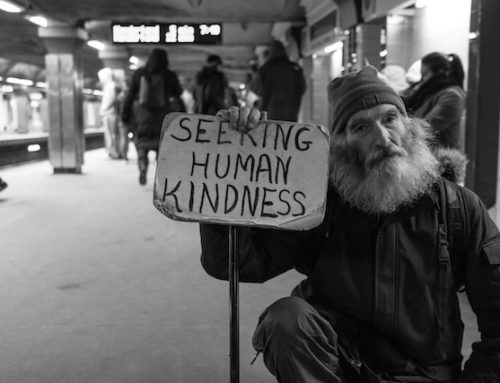This post was originally featured on HuffingtonPost.com
We often think of homelessness as a local issue, but it can be easy to forget that just about every country has a homeless problem of its own, with a number of different potential solutions. While serving a homeless population affects localities most immediately, this problem extends into every nation across the world and is thus takes on an international scale. According to United Nations data, 1.6 billion people worldwide lack access to adequate housing, nearly a quarter (21.3%) of the global population. This issue is common to nearly every country, and the long-existing nature of the problem illuminates the need to formulate novel approaches to solving it.
l scale. According to United Nations data, 1.6 billion people worldwide lack access to adequate housing, nearly a quarter (21.3%) of the global population. This issue is common to nearly every country, and the long-existing nature of the problem illuminates the need to formulate novel approaches to solving it.
Different countries have engineered different potential solutions to their homeless issue, with varying levels of success. In order to improve the situation for our homeless citizens here in the United States, it would serve us well to take stock of the various novel ways that other nations have taken on the problem. The better educated we are about the potential solutions to the problem, the more productively we can help the unfortunate here at home.
The Danish strategy for fighting homelessness encompasses four core principles. It is taken as essential fact that 1) No citizen should be living on the street, 2) Young people should not live in shelters, 3) Shelter stays should last no longer than 3–4 months, and 4) Accommodations must be provided for those getting out of prison. If we wish to truly address the much-derided prison-to-shelter pipeline that exists in the United States, this final point is especially relevant. What these core principles boil down to is a fundamental respect and care for those who have found themselves without housing. Not to say that this respect doesn’t exist in the U.S., but having it codified and made explicit seems to be a good driver of policy and behavior.
Looking at the application of these values, the results are positive. Expert estimates of the number of homeless in Denmark place it just over 6,000, comprising almost exactly .1% of the population, approximately 80% less than the U.S. proportion. While their smaller population may make it more feasible for extensive social programs, these guiding principles have clearly gone a long way towards a more compassionate policy for reducing, and eventually eliminating, homelessness.
Looking eastward, the small and relatively wealthy nation of Singapore nevertheless does deal with the issue of helping a homeless population. However, despite a rapidly growing gap between rich and poor, there exists such a small proportion that some observers have described the country as having “virtually no” homelessness. The likeliest reason for this is a nearly all-encompassing system of public housing. A striking 82% of Singaporeans live in public housing built by the government, and comprehensive programs exist to supplement meager incomes.
This policy of providing housing has shown great promise outside of Singapore, as well. While the situation has worsened in other EU nations, Finland has seen a near elimination of their homeless problem. In order to guarantee housing, the Finnish government has bought properties in addition to building their own, and converted hostels and shelters for the homeless into permanent housing. By converting the temporary solution of sheltering into a permanent one, the numbers of homeless were reduced immensely.
It’s been shown that homelessness brings a great deal of stress affecting all other aspects of life, such as looking for a job or keeping a family together. This simply compounds the hardship that the homeless must confront while attempting to improve their lot. When provided with homes, this stress is greatly reduced and rather than making them entitled or lazy, enables people to get more work done to better their living conditions.
The connecting thread between these countries appears to be a willingness to prioritize homelessness as a major quality of life issue. Whatever issues one has with social programs this extensive, the pragmatic approach has yielded impressive results across the globe. Rather than philosophize about the right way to tackle the problem, real action has demonstratively resulted in a proportion of homeless much lower than the numbers we see here in the United States.
Our system of state and municipal governments dealing with homelessness in their own sphere means that varying approaches are taken, and what we get are variable results. We’ve seen an adoption of a system very similar to Finland and Singapore in Utah, and that state has seen a 91 percent reduction in their homeless population. A great start, to be sure, but there is still progress to be made.
All of this isn’t to say that the lives of the poor and homeless in these countries don’t have their difficulties. But there exists a key difference between their approaches and that of the U.S.: a top-down sense that the homeless problem is a priority to be eliminated not with handouts and band aids, but a real, vigorous policy aimed at creating better housing conditions. It’s simply what we owe our least fortunate citizens.








